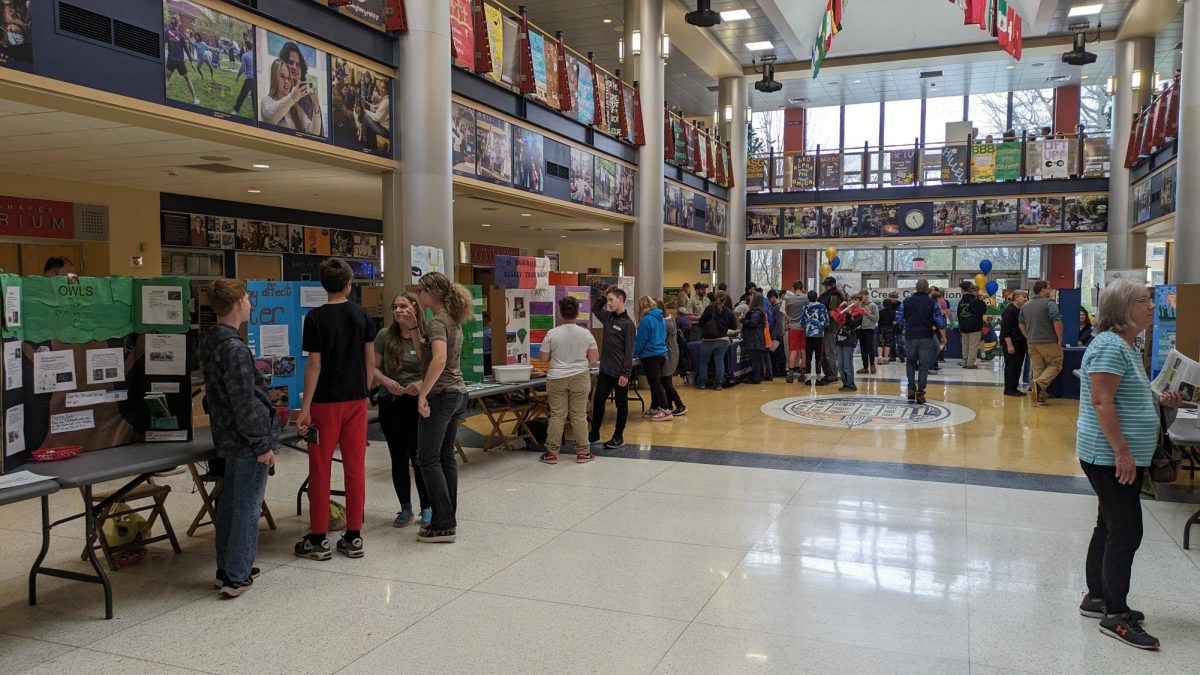Although they may be physically far apart, Allegheny College and the Indian village of Baste share a uniquely close connection thanks to a variety of efforts made by Growing Hearts Growing Minds (GHGM), a student organization which formed after some members-to-be visited the village in 2008.
Adviser to GHGM, Associate Professor of Communication Arts Ishita Sinha Roy, leads an Experiential Learning trip to India every year. This May she brought a number of current group members to the village, which is located in a remote area of southwestern India.
GHGM aims to promote a vision of global citizenship based in equality, rather than one based in feelings of pity for a “less-fortunate” community.
“It’s a give and take process…we’re becoming part of a community as a long-term investment,” Sinha Roy said.
Kimberly Garrett, ’14, went on the trip this summer and joined the club after returning to Allegheny this semester. She said she was surprised by how effortlessly she was able to relate to the villagers in Baste.
“We don’t speak each other’s language, but we were able to communicate through body language,” she said. “They taught us their dances, played us music…when we all ate together, we ate with our hands and they laughed at us because we were so bad at it.”
What impressed Garrett even more, however, was how the villagers made use of a very limited supply of resources. On a typical day, she said, they might eat about half of a normal-sized meal.
GHGM has already helped to launch several community-development initiatives by partnering with the Rotary Club in Bombay, where Roy’s father is a member.
Every major city worldwide has a branch of the Rotary Club (Meadville has two), a service-oriented organization for people of all different professions. The Rotary Club designates donations it receives to foundations for specific projects, which are strategically planned and must pass approval before they begin.
When Sinha Roy’s father moved to Baste to begin a new project, the village faced a high level of infant mortality, malnutrition and water sanitation issues. At the time of the first EL trip, some progress had already been made in terms of sustainability.
Before the Rotary Club’s involvement, women had to walk make a six-hour trip to the closest water well; now, a pipe line brings water into the village from three miles away. Deforestation, which brought severe drought to the dry region of Baste, has been replaced with reforestation efforts. These efforts, combined with the implementation of small rainwater dams, have helped to trap water in soil and allow for a more plentiful harvest season.
More than a one-time contribution, Sinha Roy’s father’s efforts have helped the village to continue gradually advancing.
“One of the things [students] really appreciated about his approach was that it wasn’t about charity, it was about sustainability,” Sinha Roy said. “His approach has always been about listening and dialoguing with community members and making change happen on their terms.”
The first initiative sponsored by GHGM was the construction of an elementary school. Before it became an ASG-accredited organization, the group raised $5,000 by selling T-shirts and finals care packages, and this money helped implement the school as well as a basic meal plan for students. This meal plan essentially entails a glass of fortified milk for each child per day.
Previously in Baste, schoolchildren of all different ages sat beneath a tree, where one government-appointed teacher attempted to teach a wide variety of concepts simultaneously.
Now, GHGM’s goal is to raise enough money for a vocational school for females.
“They’ll learn skills they need to get jobs outside of the village,” Garrett said. “Mechanics, tailoring is a big one, and carpentry.”
Despite these challenges, GHGM is not focused on “rescuing” the village so much as maintaining a communication with it.
“I wanted students to work on establishing communion, talking to someone, not just giving money and walking away from a potential interaction,” Sinha Roy said.
She elaborated, saying she instructed students on the trip not to give anyone they saw money, to avoid putting themselves in a position of power.
“Find a way to make them feel that they’ve given you something very enriching, and therefore you’d like to give them a gift,” she said. “An exchange helps to create that equality.”
Additionally, this year’s Street Food Fair will be co-sponsored by Unión Latina, who will also provide recipes for the event.
President of Unión Latina Laura O’Campo, ’13, who went on the EL trip to India in May, said she wanted to collaborate with Roy’s group after noting similarities between Mexican and Indian cultures.
“[In both cultures], there is the fact that women marry at a very young age,” O’Campo said. “We attended a wedding, and the bride looked like she was 14 or 15 years old being wed.”
O’Campo, who is Mexican-American, said educating women in both cultures could help to advance the communities as a whole.
President of GHGM Jessica Singh, ’14, agreed that education is fundamental to GHGM’s overall purpose.
“If we educate the people there, they can go on to have careers, eventually become self-sufficient and give back to the community themselves,” Singh said. “And we can watch it grow and get better.”
GHGM holds that this personal, dialogue-based approach to community development is far more effective than a more traditionally altruistic approach.
“Sometimes, we get into this philanthropic mindset and inflate ourselves, saying we are good people for giving to the less fortunate,” said GHGM member Michael Yarnell, ’13. “That in and of itself…is counterproductive.”
Sinha Roy said that the group has had the potential to create significant advances because it is connected with one specific community.
“I want my students to see themselves as contributing to a partnership,” Roy said.




